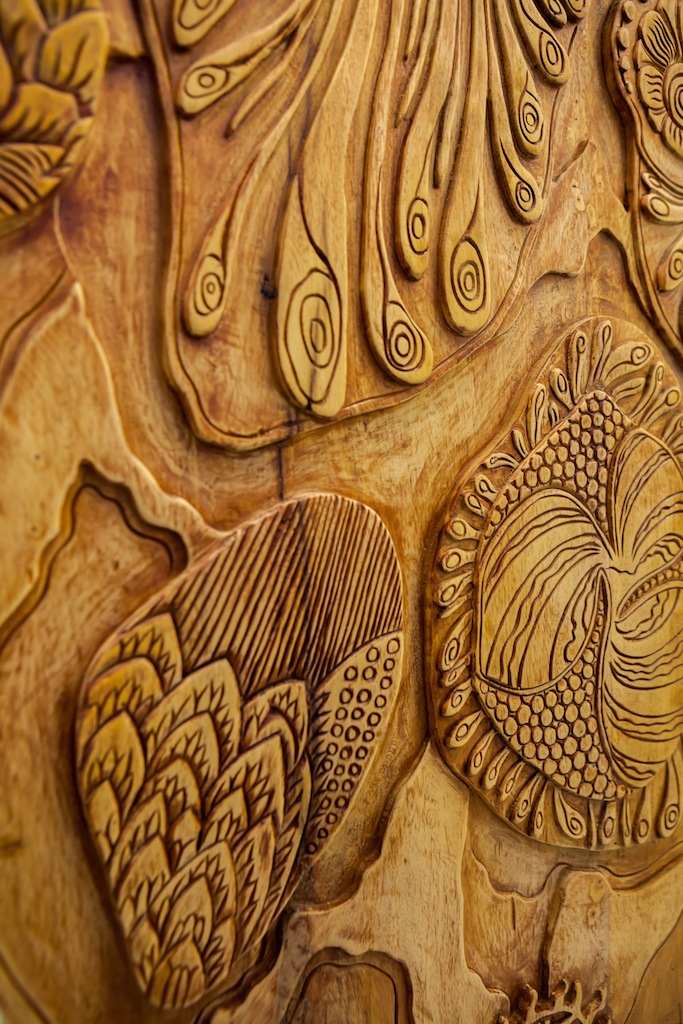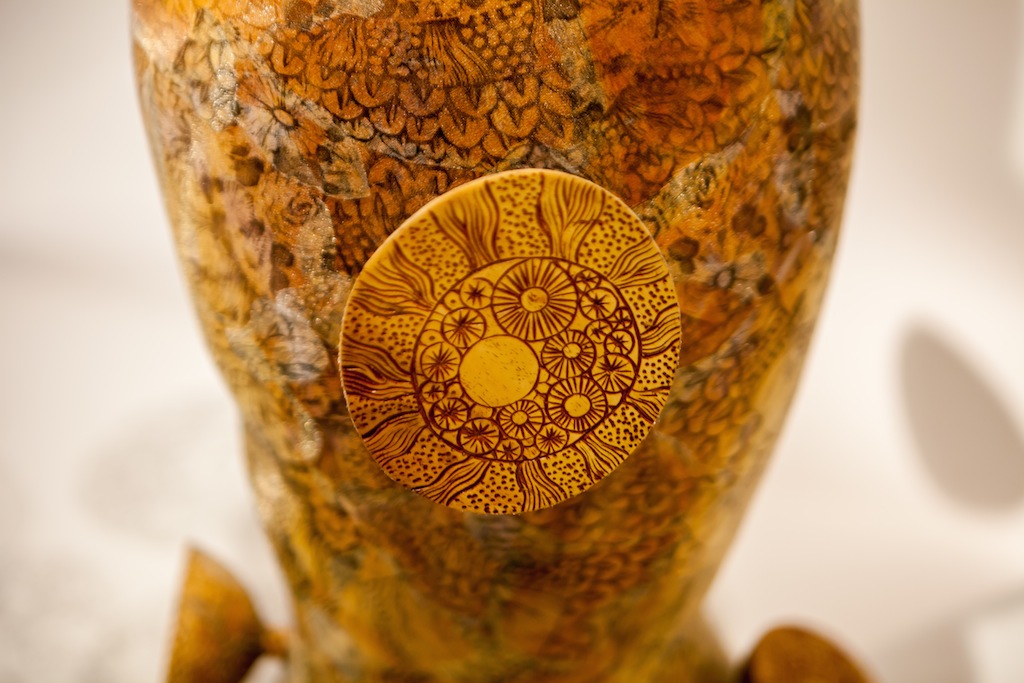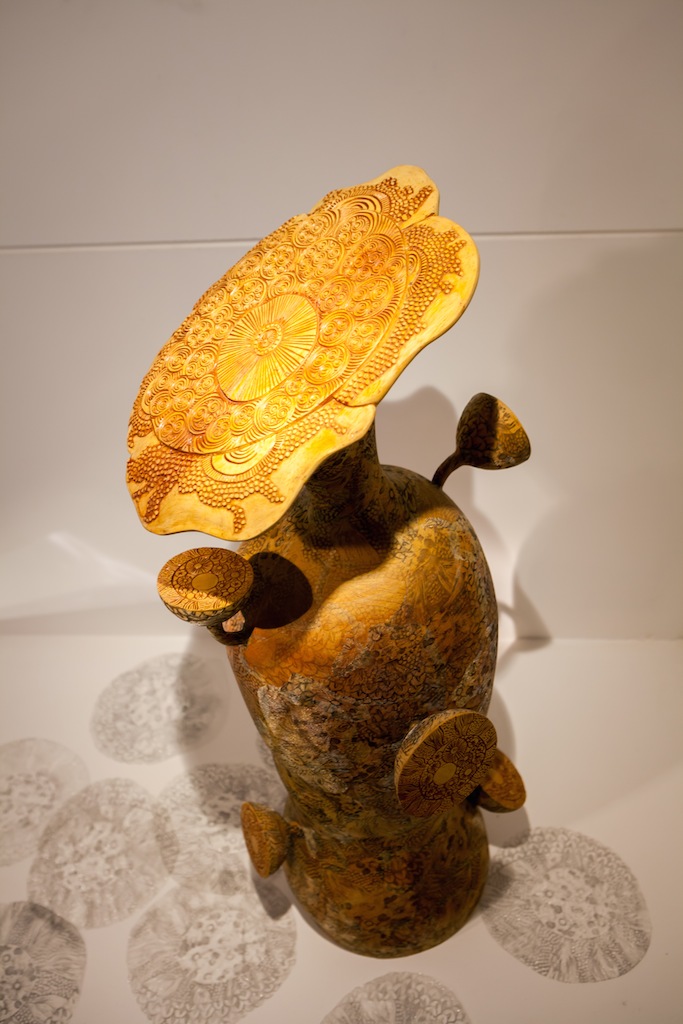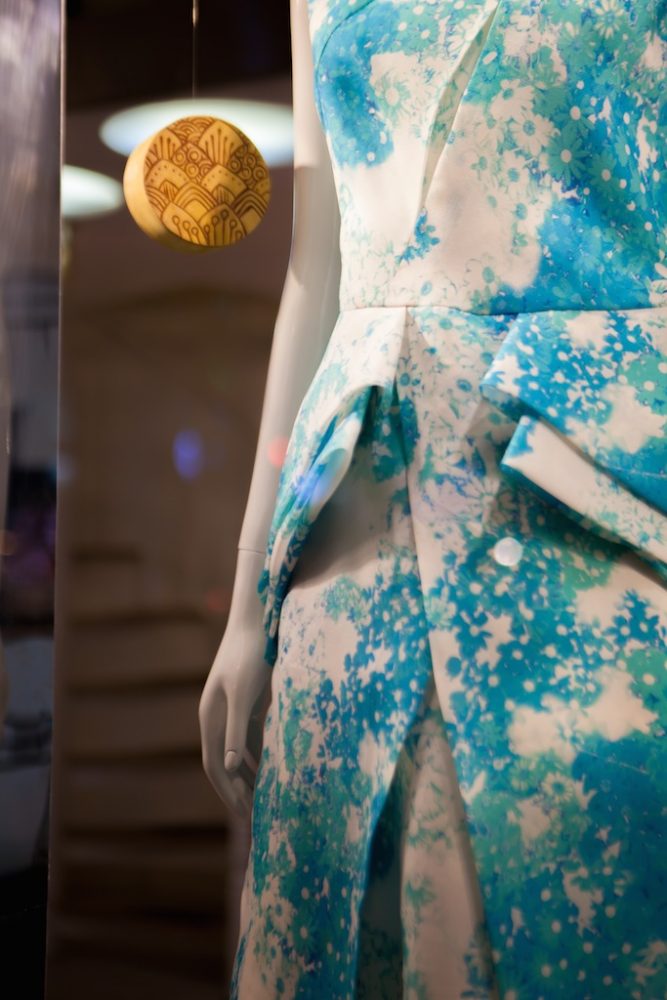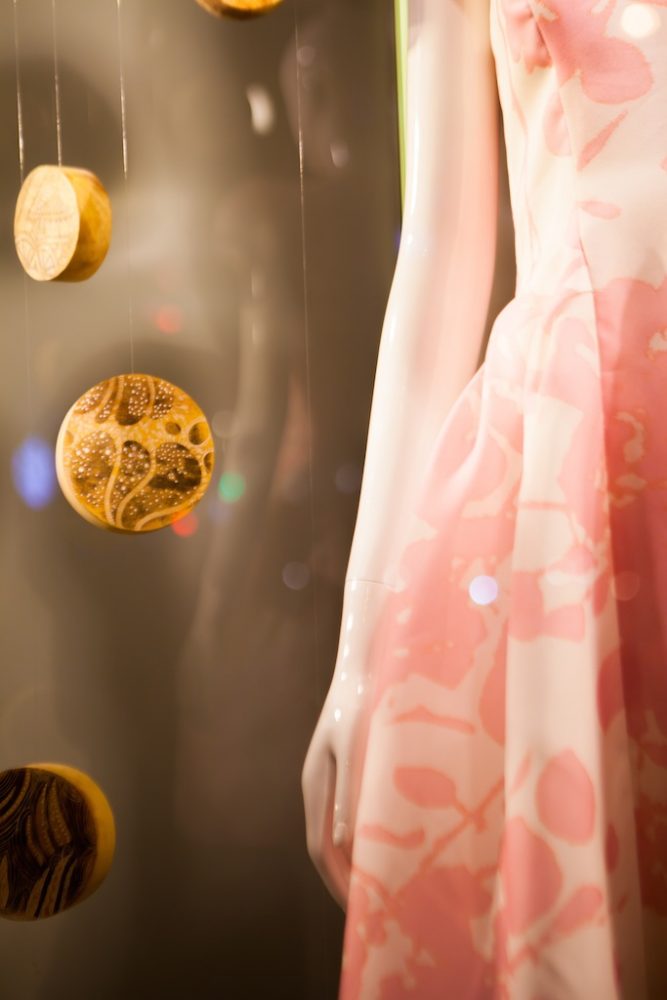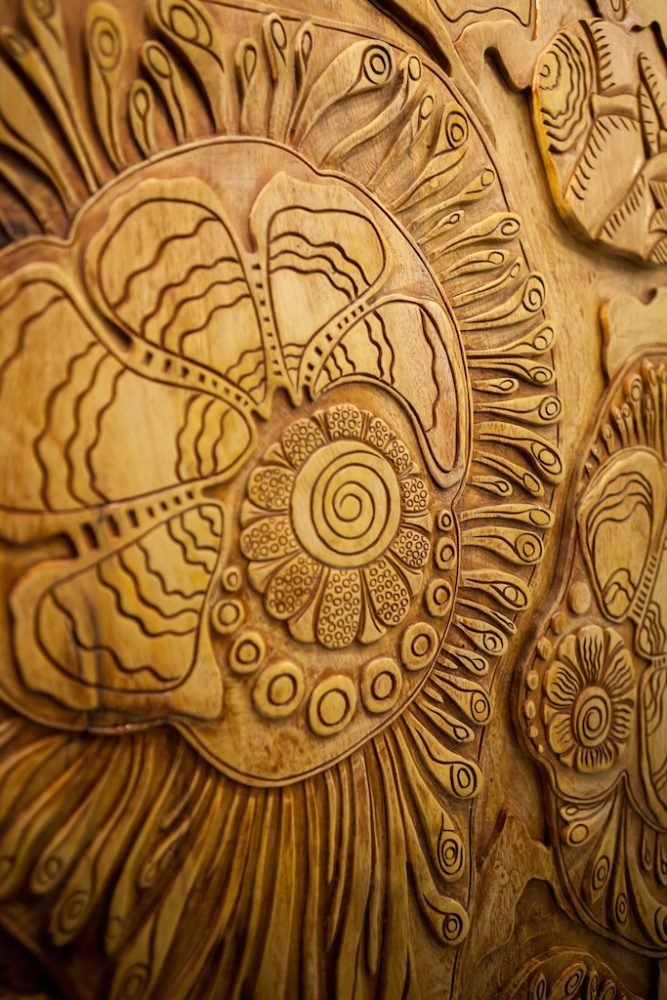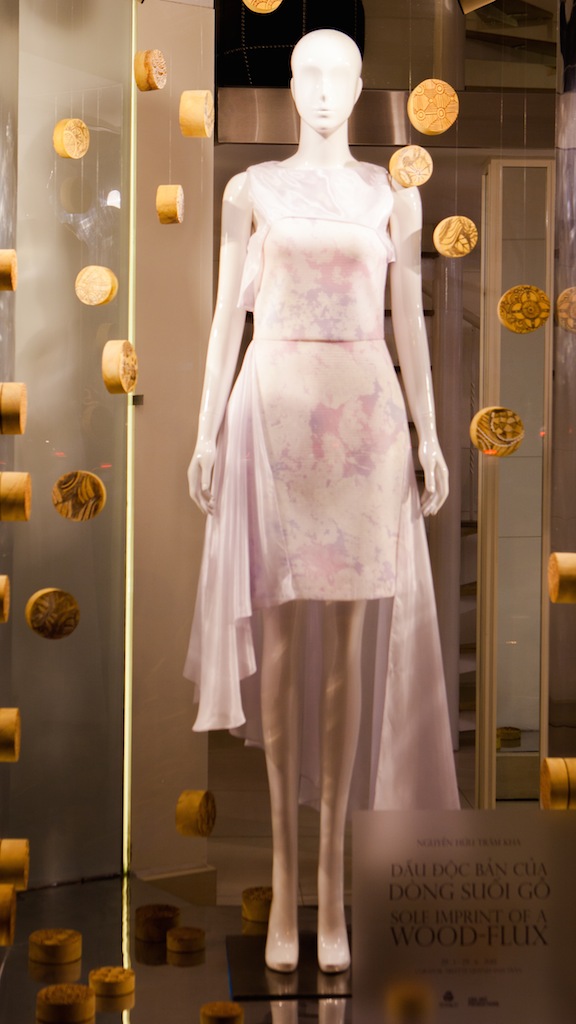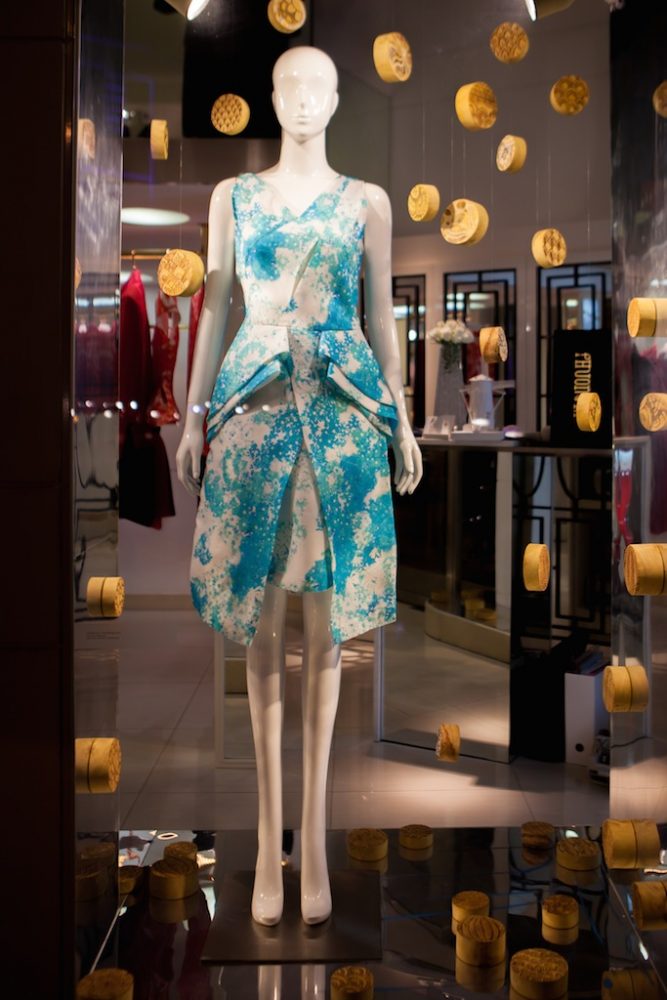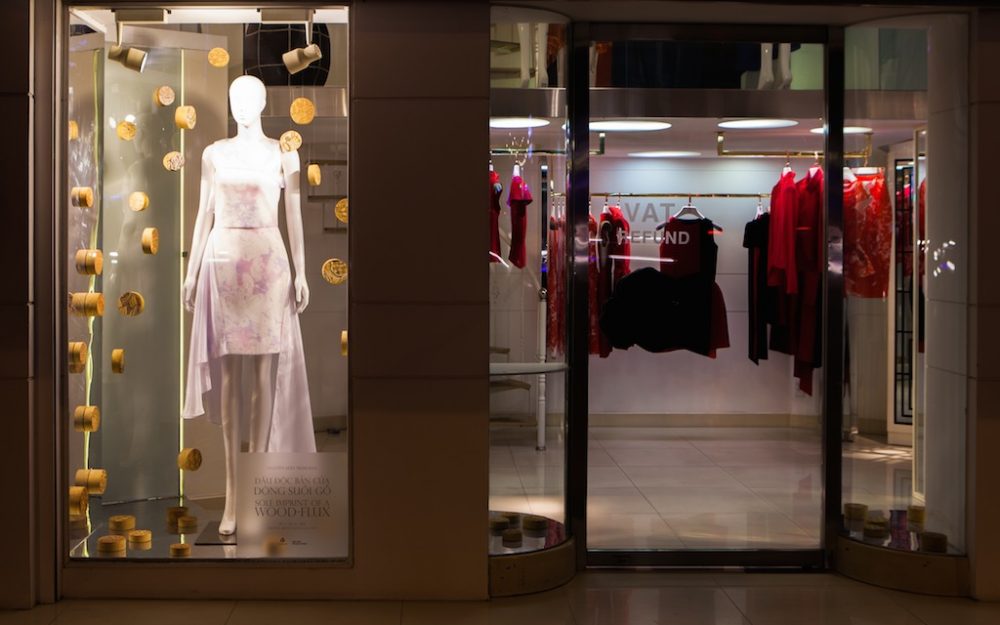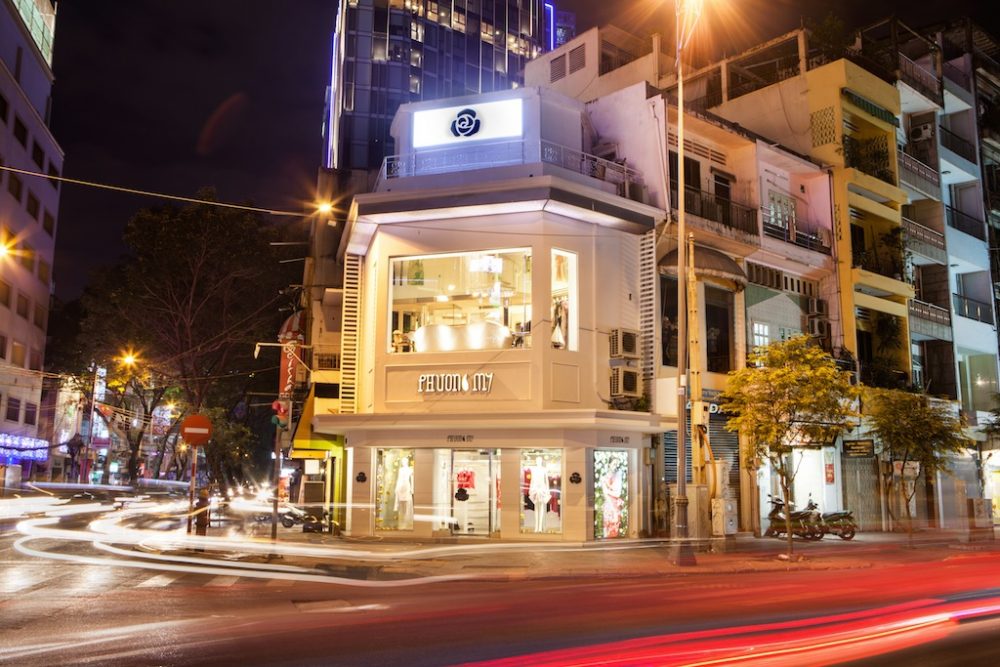Opening: 29.01.2015
Location: Phuong My Flagship Store
81 Le Thanh Ton, District 1
Ho Chi Minh City
Wood-flux – a wooden flow – seems to be a contradictory phrase for how can something as sturdy as wood also stream so fervently. Such a concept indeed recalls a Japanese genre of woodblock prints on silk and paper – ‘Ukiyo-e’ – meaning ‘pictures of the floating world’. Inspired by the caliber of Ukiyo-e woodblock and the textile pattern of PHUONG MY’s Spring Summer 2015 collection, artist Nguyễn Hữu Trâm Kha showcases various fascinations of a ‘Wood-flux’.
Ukiyo-e art prospered from the seventeenth to the nineteenth century in Edo (today’s Tokyo), thanks to its patronage by the merchant class, which gained them higher recognition in Japan’s then social hierarchy against the elitist military dictatorship. While early Ukiyo-e prints illustrated the sensuality of women and their contemporary life, the later masters expanded their theme to nature and landscape. Instead of realistic depiction, Ukiyo-e prints of natural scenes, such as seascape and flora, were imaginative visions about the world. This is also how Trâm Kha depicts her wood-flux.
Trâm Kha’s two sculptures are differing depictions of a ‘wood-flux’. ‘Carved into memory’ is a large-scale two-sided woodblock looking like an ancient fossil of exquisite flora found in motion; while ‘The persistent growth’ could be an anthropomorphic creature combining the sensuous curves of a woman with that of a possible biological plant. While the carving of these pieces takes quite some time to produce, each image realized is, by contrast, a single moment, a single imprint. It is as if the artist submerged herself in her imagined world to find the moment when she could sense rhythm.
Both Trâm Kha and Phuong My love utilizing contrasts in subject, material, form, and composition. For example, Phuong My has a Japanese textile designer create delicate and feminine patterns; she then weaves them into particular rigid fabric to style powerful silhouettes. Meanwhile, Trâm Kha meticulously carves a wooden surface – a solid medium – to characterize flora and abstract creatures as if they are floating.
In the past, Ukiyo-e required collaboration between artist, engraver, printer, and publisher. In contemporary art and design, such collaboration still plays an important role. Trâm Kha designs the artwork for the carver who executes her drawings in these woodblock sculptures. The Japanese designer creates textile pattern inspired by Phuong My’s ideas of femininity and nature; and then Phuong My will utilize that print design across her whole subsequent collection. In this forthcoming collaboration between Phuong My and visual artist, Trâm Kha, the history of the ukiyo-e woodblock aligns harmoniously with Phuong My’s print textile. One unique woodblock can produce multiple prints, just as one unique textile pattern can be shaped into multiple garment pieces for a collection. This is an essential relation between originality and reproduction in art and fashion design.
The exhibition is on view from 29th January 2015


